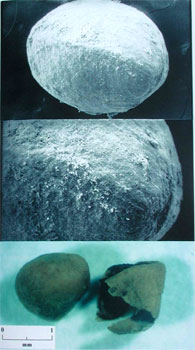Due to the popularity of Silchester's authentic Roman garden in 2002, the garden will be back again for the 2003 season.......
Immediately right of the visitor's entrance, Nancy Fulford and Mary Hancock have once again created a garden brimming with plants and herbs that were commonly used by the Romans in Britain over 1800 years ago.
Gardens in Roman Britain ranged from the elaborate and extensive horticultural showpieces of Roman Governors and high status buildings such as the 'palace' at Fishbourne to smaller plots within civilian and urban sites - they were a little piece of 'home' abroad.
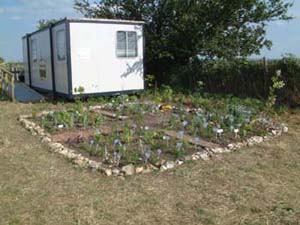
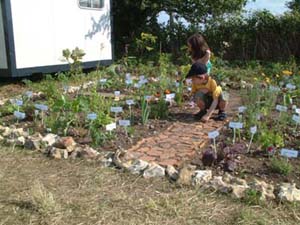
In recent years, the list of plants grown in Britain by the Romans has grown considerably as environmental archaeology is implemented more and more during excavation. Silchester, being a greenfield site has been one of the most useful Roman towns in the search for urban gardens thanks to the lack of modern construction damaging vitally important evidence. Indeed, all of the plants in our 'modern Roman garden' are based on seeds and macrofossils actually recovered from Silchester during it's many years of excavation.
Amongst the many plants growing in the garden, there is garlic, rhubarb, lettuce, cabbage and cucumber as well as St John's wort, geraniums, marigolds, poppies and box along with a whole host of other plants grown for both culinary and medicinal purposes. The pictures below illustrate and explain just some of these.
Coriander (Coriandrum sativum L.)
This photograph (right) shows coriander (Coriandrum sativum L.) growing in our Roman Garden at Silchester. Coriander was used very much as it is in the modern day - as a flavouring for culinary creations. In Roman Britain, coriander was considered to be fairly exotic and a high status food stuff.
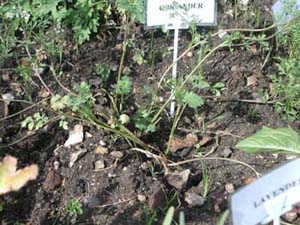
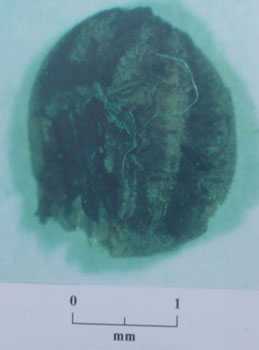
This photograph (left) shows a coriander seed as identified from samples taken from a pit at Silchester in 1998. The pit lay in the north west corner of the trench currently being excavated and was found alongside other exotic species such as walnut, sloes, plums and fig (see the section on figs). The photograph was taken down an ordinary binocular microscope.
Plantain (Plantago Major)
This photograph (right) shows plantain (Plantago Major) growing in our Roman Garden. Like many species that the Romans nurtured, the uses of plantain were numerous. Not only could this plant be used as a foodstuff, but it also boasted medicinal qualities which helped to alleviate toothache when chewed. Due to plantain's drying and binding properties, it could also be used as a treatment for skin diseases.

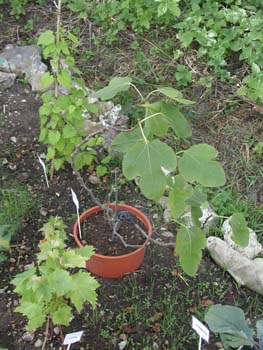
Fig (Ficus carica L.)
This photograph (left) shows a fig plant (Ficus carica L.) growing in our Roman Garden. Mostly figs were imported into Britain from abroad but it isn't totally out of the question that figs might have been cultivated to a small extent within Britain itself. Figs were considered to be highly exotic and as well as being a tasty fruit, fig had a multitude of uses ranging from curdling milk to acting as a diuretic and a laxative. It was also made into 'wines' and syrups as well as being rubbed onto meat as a preservative.
